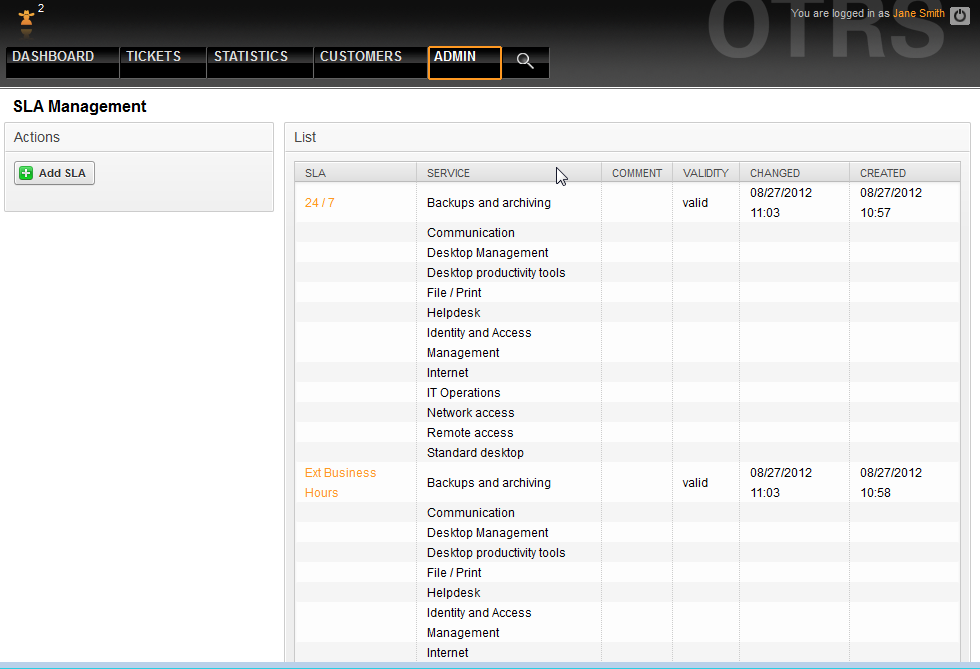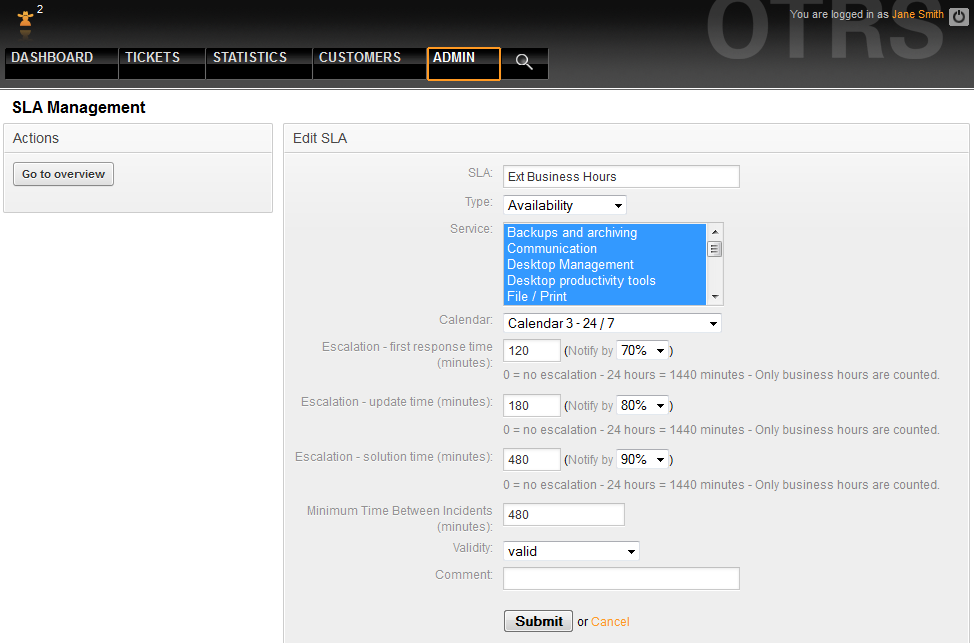Service levels and the respective agreements (service level agreements, SLAs) document quality pledges for IT services. SLAs are recorded and administered in the admin interface.
The following parameters can be recorded with every SLA:
OTRS::ITSM offers by default up to 99 different calendars to describe the various time zones for work or service times. The SLAs can be allocated to them ("service level window"). Various time spans can be entered (in minutes) which OTRS::ITSM uses to control notification and escalation:
[ Response Time ]
= reaction time with incidents
= start of service request procession ("service request lead time")
[ Update Time ]
= notification time
[ Solution Time ]
= time elapsed until incidents are resolved ("maximum time to repair", "MTTR")
= delivery time for service requests ("delivery time")
[ Min. Time Between Incidents ]
= "MTBI": minimal time between closure of the last incident ticket and recurrence of an incident for which the same SLA applies.
Warning
If no values for the above-named times are entered in the SLAs, escalation is affected according to the time fields "response time", "update time" and "solution time" assigned to all queues!
Important time values of OTRS::ITSM are based on the "ITIL incident lifecycle":
Source: OGC, ITIL Service Support Documentation
The OTRS stats framework facilitates, among other things, the definition of the actual availability of a service from recorded incidents, which often serves as a performance figure in system-oriented SLAs.


